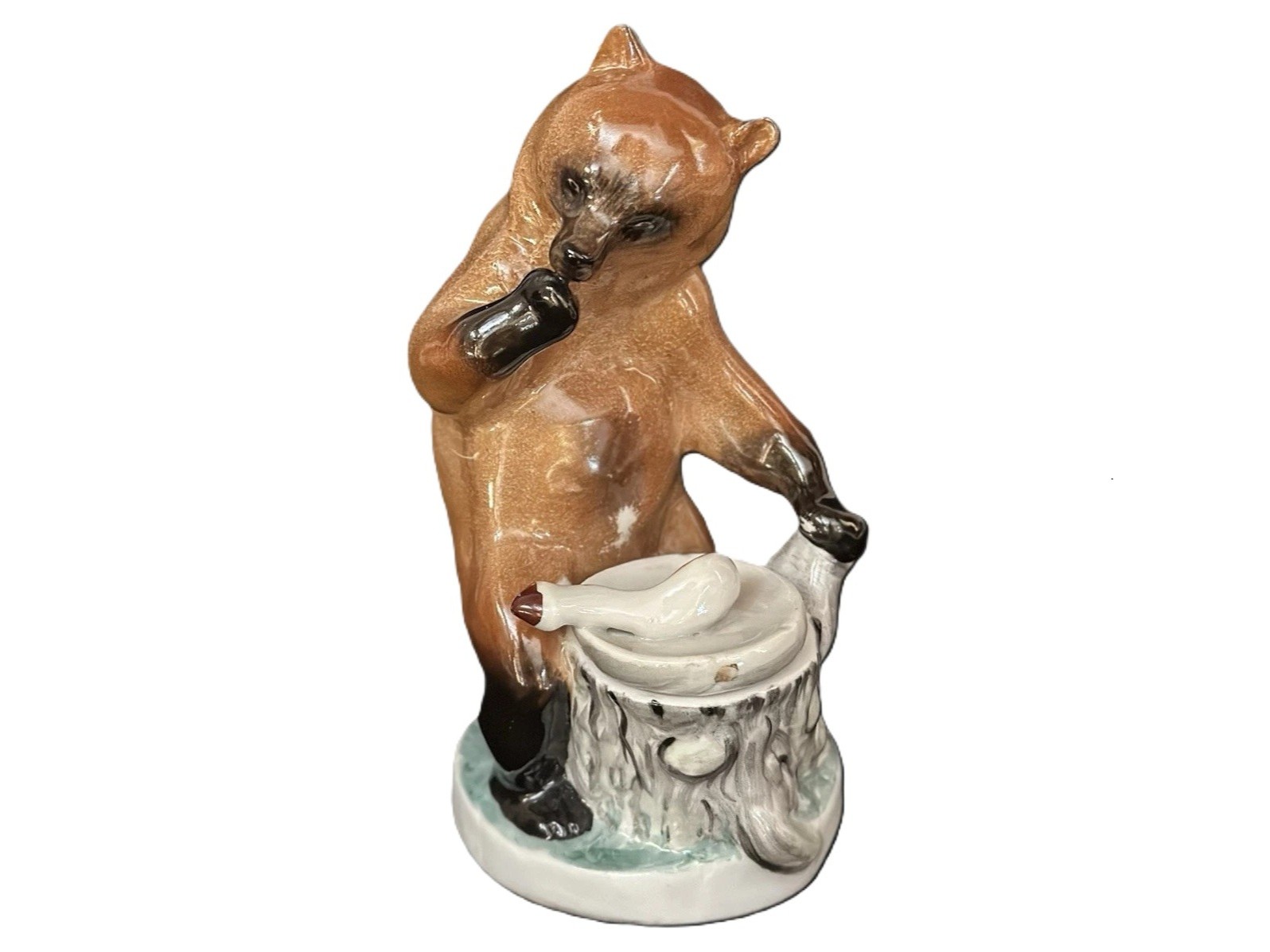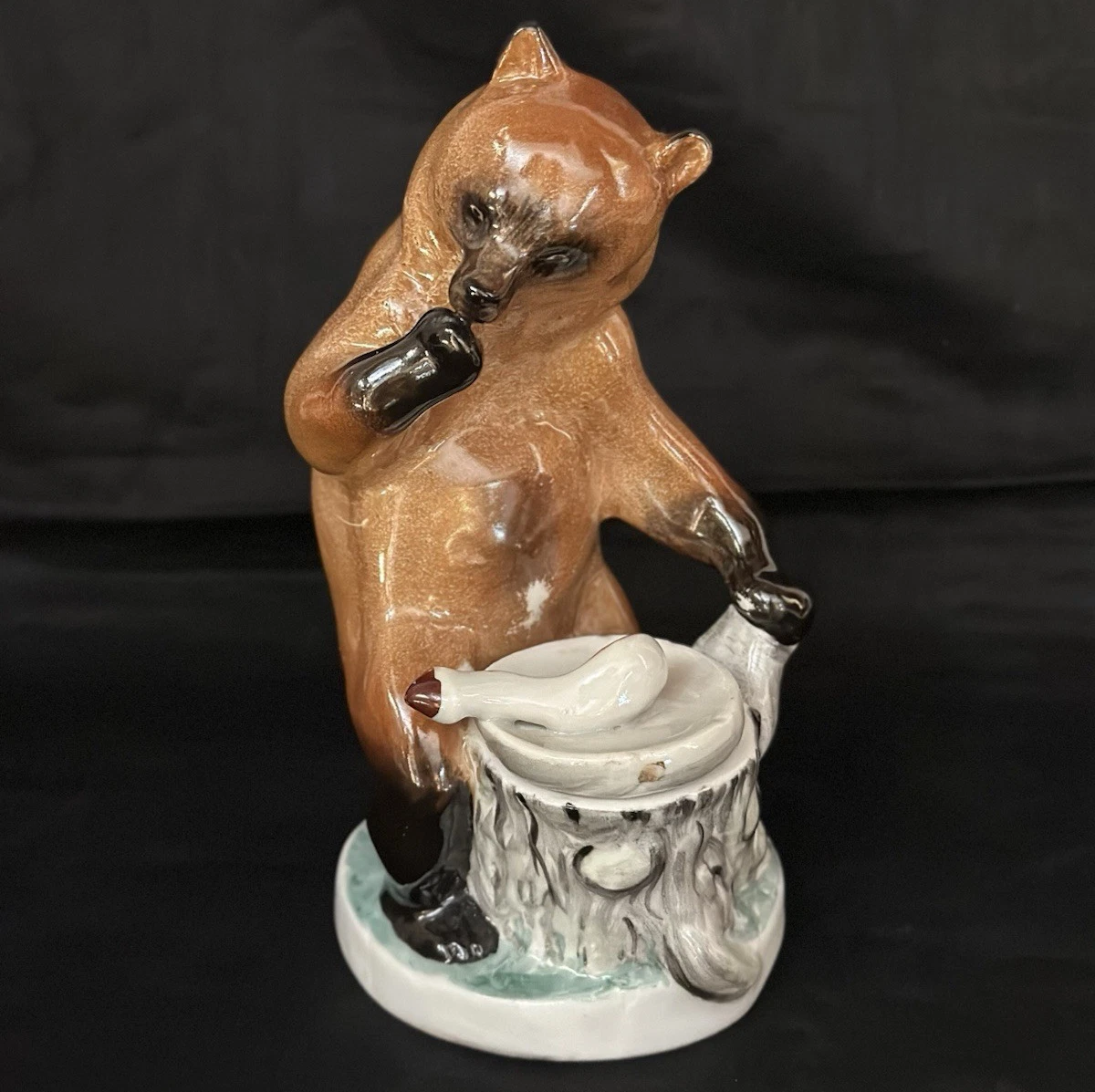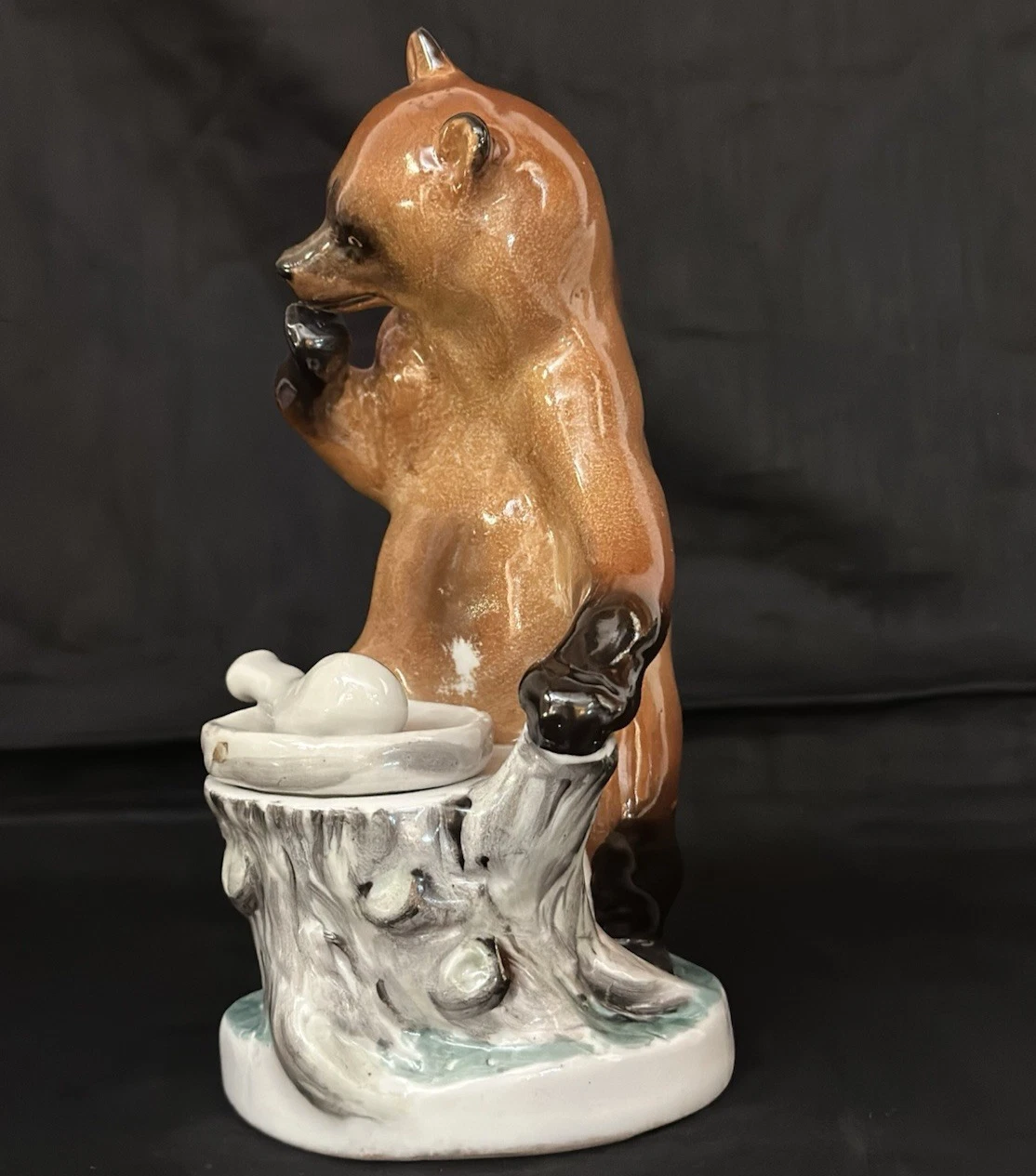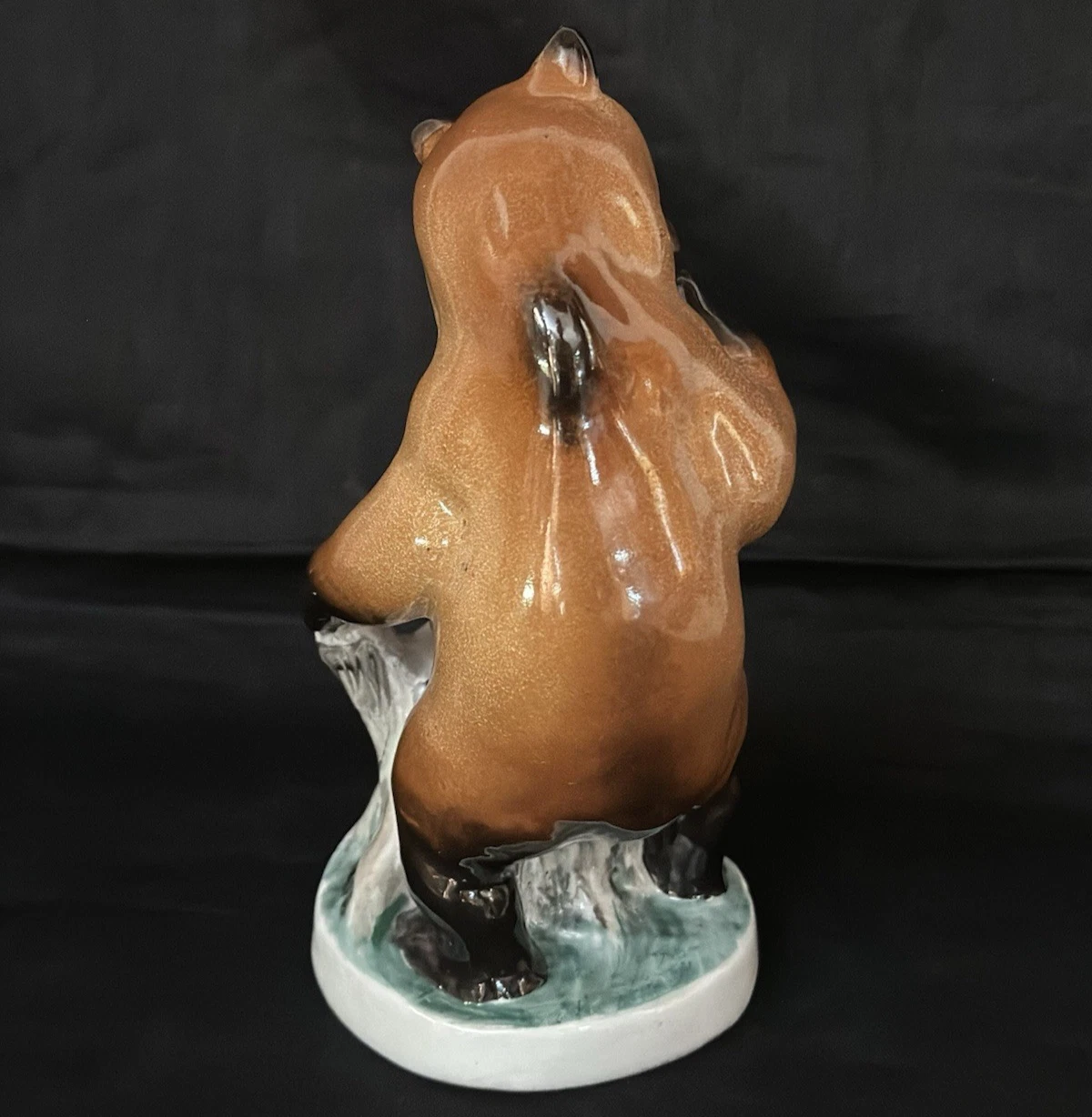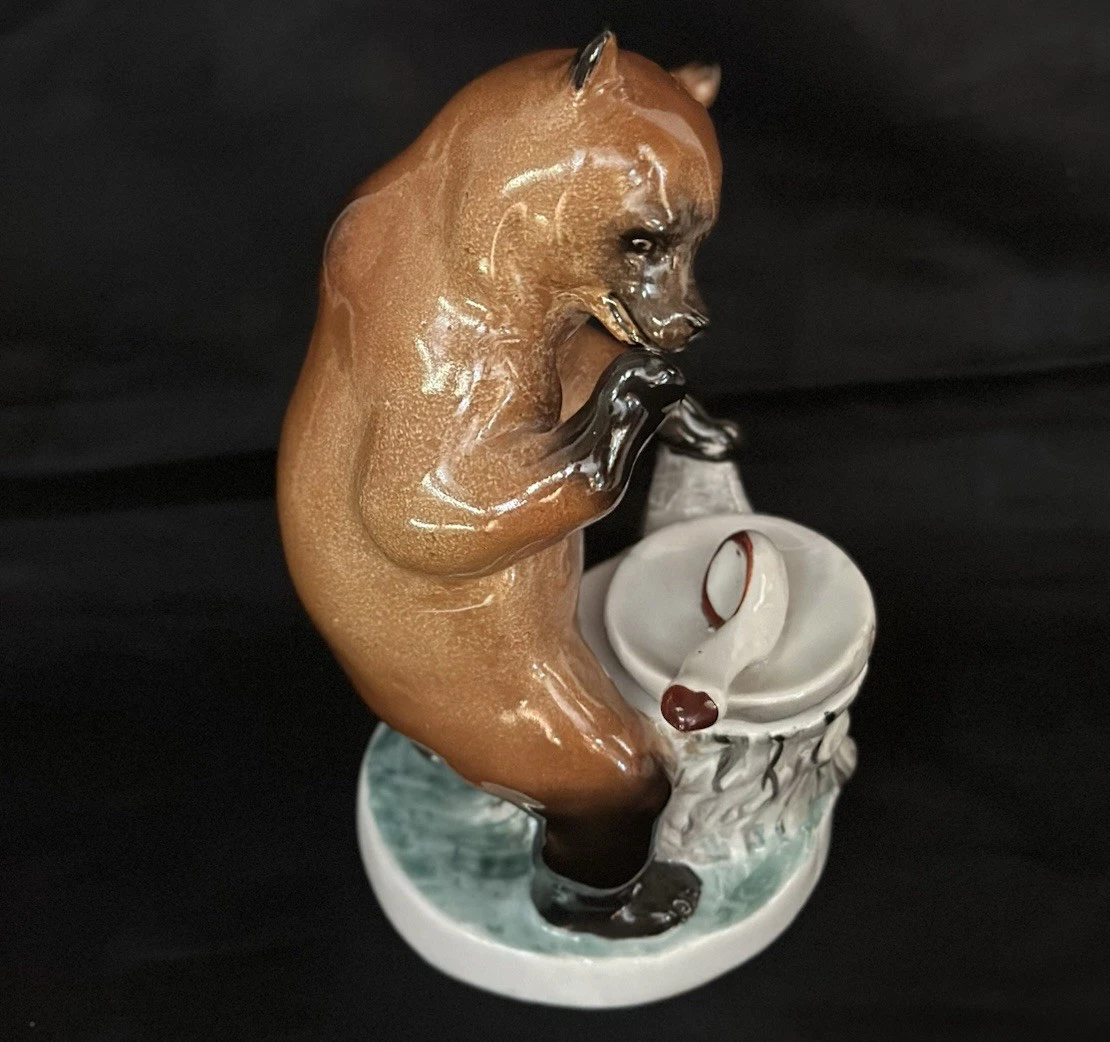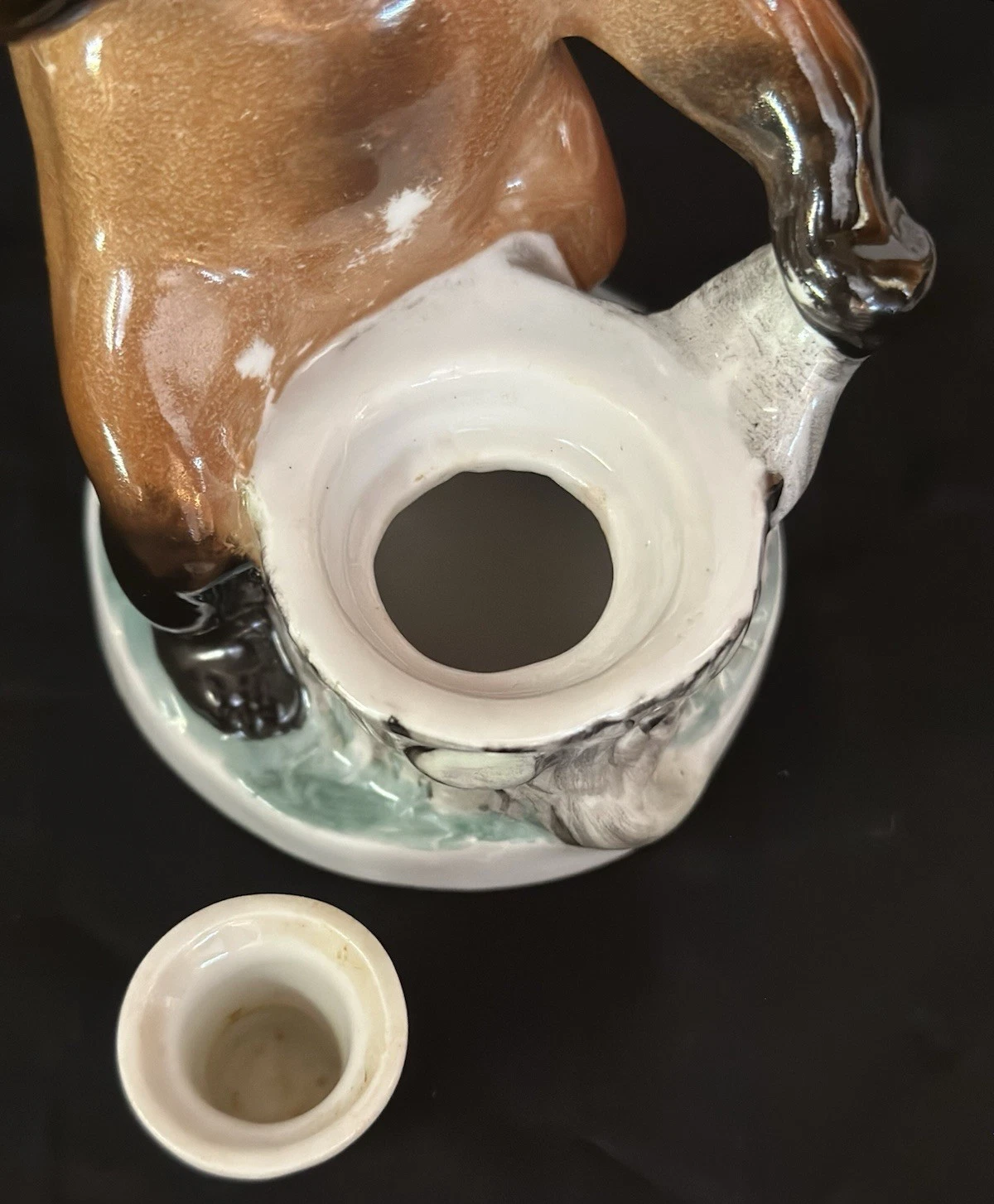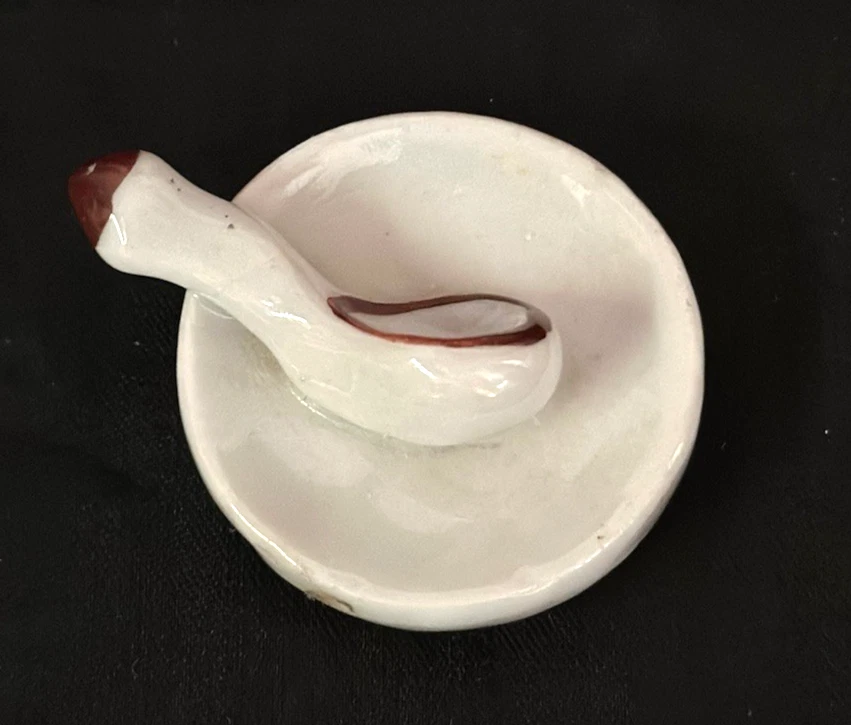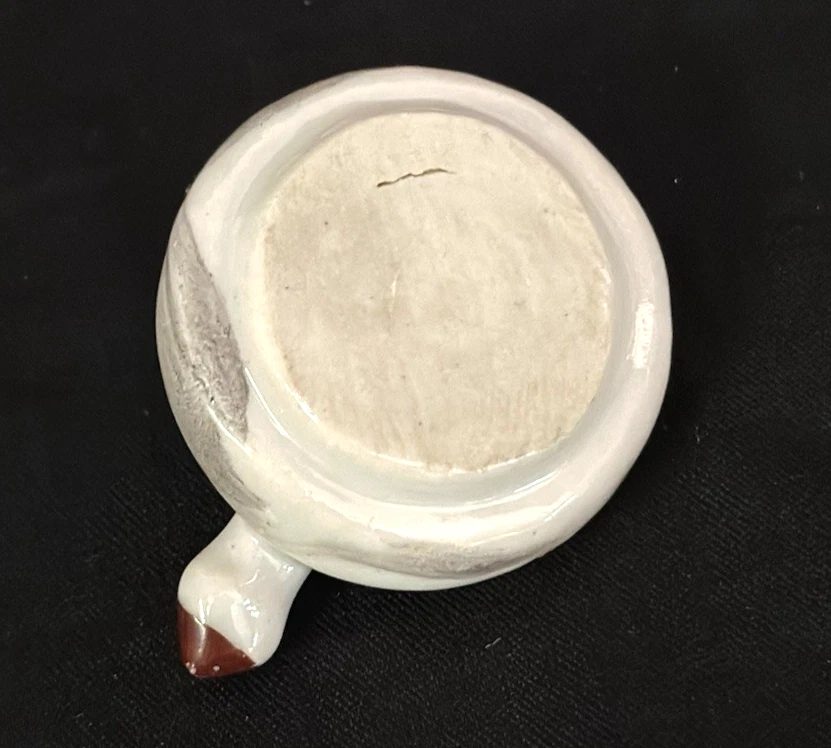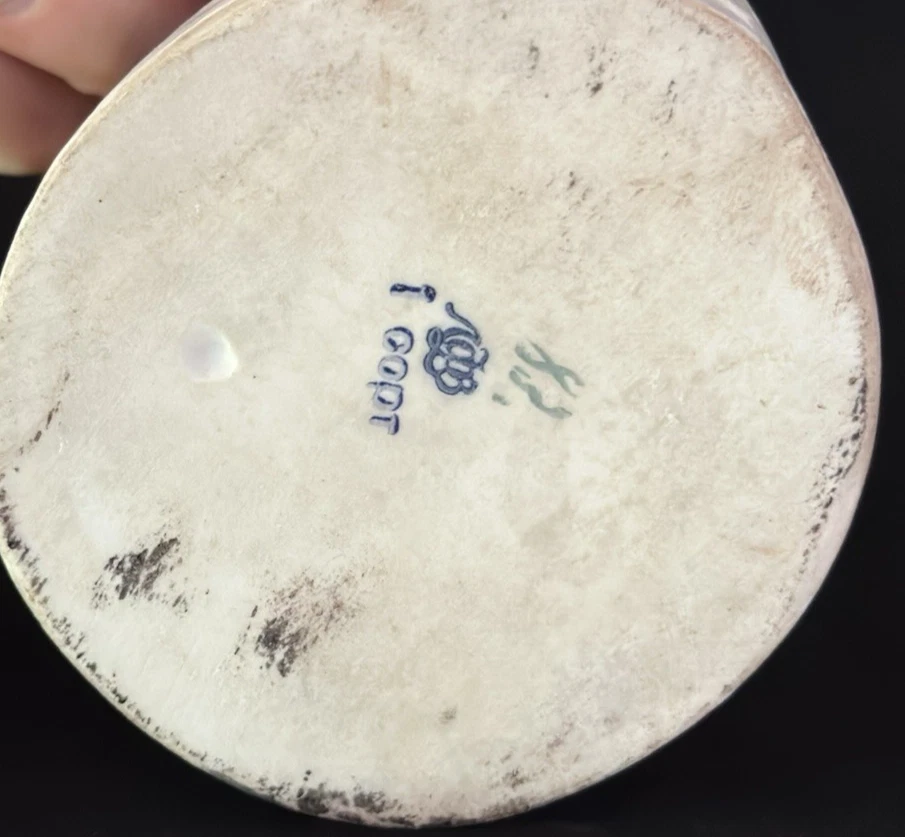
Figural Porcelain Bear Inkwell:
| Categories | Ceramics/Porcelain Figural |
| Type | Bear |
| Material | Porcelain |
| Markings | LFZ LOMONOSOV mark |
| Manufacturer | LFZ Lomonosov |
| Origin | Russia |
| Date or Era | circa 1950 |
| Measuring | 4” diameter; 6 ½” high |
This figural porcelain bear inkwell was made by the LFZ Lomonosov Porcelain Factory in the Soviet Union. It is hand-painted with naturalistic details that bring the bear figure to life.
Design and Figure:
- Standing Bear Figure: The central element is a bear figure, depicted in a anthropomorphic pose. The porcelain is painted to suggest fur, with subtle variations in shades of brown and black, particularly around the face, ears, and paws. The main body of the bear is primarily off-white or cream, with light brown shading.
- Inkwell: The inkwell itself is integrated into a tree stump situated directly in front of the bear. The stump houses the ink reservoir. The top of the stump acts as the lid covering the inkwell. A small porcelain spoon can be seen on top of this stump lid. One imagines a honeycomb stored within the tree cavity and Mr. Bear is ready to dig in.
Manufacturer and Age: This inkwell is attributed to the LFZ Lomonosov Porcelain Factory (now Imperial Porcelain Factory) in Russia and is dates to the 1950s. The factory’s is known for its production of high-quality porcelain figurines with animal-themed, designs.
Information about the LFZ Lomonosov Porcelain Factory:
The history of the Lomonosov Porcelain Factory, known as the Imperial Porcelain Factory for much of its existence, is deeply intertwined with the Russian state.
- Foundation and Imperial Ownership (1744-1917):
- The factory was founded in 1744 in St. Petersburg (then the capital of the Russian Empire) by Empress Elizabeth, daughter of Peter the Great. It was originally known as the Imperial Porcelain Factory (IPF).
- It was established with the explicit purpose of producing porcelain exclusively for the Russian Imperial Court and aristocracy, to reduce reliance on expensive imports from Saxony (Meissen) and France (Sèvres).
- This makes it one of the oldest porcelain manufacturers in Europe, operating under continuous state ownership and patronage throughout the Imperial period. It was never a private concern during this time.
- Mikhail Lomonosov, the famous Russian polymath, played a significant role in developing the scientific basis for porcelain production at the factory in the mid-18th century, though the factory was named in his honor much later.
- Soviet Era and “LFZ” (1918-1991):
- After the October Revolution in 1917, the Imperial Porcelain Factory was nationalized by the Soviet government.
- In 1925, it was renamed the Leningrad Porcelain Factory (LFZ) in honor of Mikhail Lomonosov’s scientific contributions, as Leningrad was the new name for St. Petersburg.
- Throughout the Soviet era, LFZ remained a state-owned enterprise. It continued to produce high-quality porcelain, adapting its designs to reflect Soviet ideology and aesthetics, but also maintaining some traditional craftsmanship and motifs. Many of their animal figures and charming designs, like this bear inkwell, were produced during this period. The 1950s fall squarely within this Soviet, state-owned period.
- Post-Soviet Era and Return to Imperial Name (1991-Present):
- Following the collapse of the Soviet Union, the factory was privatized in 1993.
- In 2005, it officially reverted to its original name, the Imperial Porcelain Factory (IPF), celebrating its historical legacy.
Sold for $141 in June 2025
Content disclaimer. The information posted is the owner’s best knowledge and may not have been vetted by the SOIC. We welcome comments, corrections, and additions, working to make our website information comprehensive and accurate.
Join the Society of Inkwell Collectors (SOIC) – it’s free!
Founded in 1981 as a non-profit organization,
we are documenting inkwells (and accessories).
We’re here to help and inform!
